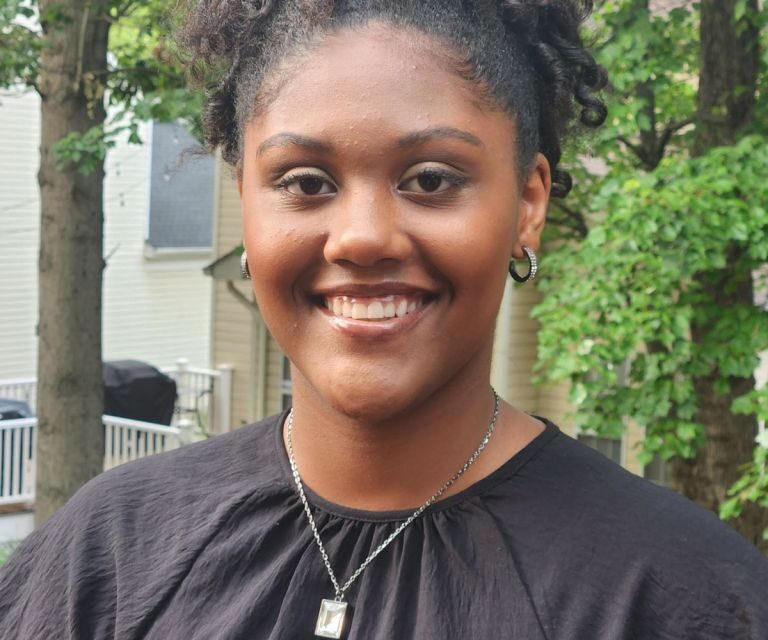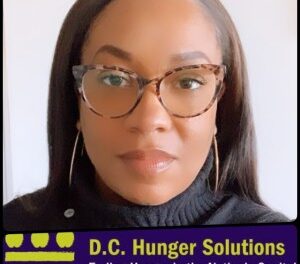By Mylika Scatliffe
AFRO Women’s Health Writer
Peyton Cain, 14, of Glen Burnie, Md., was in second grade, when her teacher noticed she was having trouble staying focused in class.
“She mentioned it was really hard for Peyton to stay on task,” said Teri Cain, Peyton’s mother.
“She would easily distract herself. If she saw another classmate doing something she wanted to do, she’d start doing that and the teacher would have to redirect her,” Cain continued.
Peyton’s teacher suggested a call to her pediatrician which eventually led to a diagnosis of attention deficit hyperactivity disorder, commonly referred to as ADHD.
October is National ADHD Awareness Month. ADHD is one of the most common neurodevelopmental disorders of childhood. According to the National Institute for Mental Health, “ADHD is marked by an ongoing pattern of inattention and/or hyperactivity-impulsivity that interferes with functioning or development.”
The pervasive stigma and misinformation regarding ADHD make awareness especially important. ADHD symptoms add to the stigma and false assumptions people have about those living with the disorder.
Dr. Aditya Pawar, a child and adolescent psychiatrist at the Johns Hopkins Children’s Center in Baltimore, Md., told the AFRO that ADHD doesn’t present suddenly. Its onset is in early childhood, as early as age 4 but is usually diagnosed sometime between ages 6 and 12. The Diagnostic Statistical Manual (DSM) has 12 criteria for ADHD, and at least six of the 12 criteria need to be present for an ADHD diagnosis.
“In children it presents with a lot of hyperactivity where a kid is doing a lot of jumping and climbing or constantly running as if driven by a motor, often putting them at risk for injury,” said Pawar.
Pawar further described how children with this disorder can also be inattentive, lack focus and be forgetful while also displaying impulsive behaviors, like blurting out answers and speaking out of turn. Children with ADHD display these behaviors in multiple settings – at home, church, extracurricular activities – not just at school.
“Inattention is the most common symptom; you might notice a kid who’s always daydreaming and so unfocused that they can’t complete assignments. It gets to the point that a teacher or parent has to constantly remind them to complete their work,” Pawar said.
“All of these behaviors affect social skills which results in problems in life, including developing friendships,” he said, then continued, “If the condition is not diagnosed and managed during childhood, adults with ADHD may have trouble maintaining employment, have more car accidents because of impulsive behavior, procrastinate and lack motivation to complete tasks.”
Stereotypes of ADHD medications still persist, even with so much information available in the public domain. Cain admits to having preconceived notions prior to her daughter’s diagnosis, especially worrying about how medications like Ritalin or Adderall might affect her.
“I had a stigma of what ADHD was going to look like. I imagined this little hyper White boy running around, jumping off of stuff, and taking Adderall. That was all I knew,” Cain said.
“After going through it, seeing how it can manifest in different people — especially Black people and Black women in particular — it was an eye opener. It humanized it for me,” Cain continued.
Stigma and disparities for communities of color can affect how parents approach getting children evaluated if they notice their children having a problem. Dr. Ajoke Ajayi-Akintade, a neurodevelopmental pediatrician at Mt. Washington Pediatric Hospital in Baltimore, has found that in communities of color, parents sometimes are hesitant to broach the topic with teachers at school.
“What I find is that most parents of color are kind of reluctant to bring it up at school because they don’t want their children labeled in any kind of negative way,” said Ajayi-Akintade.
The pediatrician explained to the AFRO the importance of considering a child’s entire health history and not seeking a hasty diagnosis. She also advised that some of the symptoms of ADHD mimic those of other health issues, such as lead poisoning and traumatic brain injury.
“It’s important to take into account a child’s entire health history and to know that if these behaviors — inattention, impulsivity, hyperactivity — are only noticed in school, it’s probably not ADHD,” said Ajayi-Akintade.
“The behaviors have to occur in several domains — at church, home, and school — and it’s important to note if the behaviors have been present over a period of time, perhaps six months or more,” she continued.
Cain remembers when Peyton was diagnosed, some things she noticed about her behavior at home fell into place. “She would talk as she thinks and sometimes just blurt out things. I remember thinking, ‘It all makes sense now,’” said Cain.
Managing ADHD doesn’t mean automatically putting a child on medication. Medication is just one facet of treatment. Ajayi-Akintade’s approach is that no single method of managing ADHD is superior to the other.
“I always tell parents that managing ADHD is multi-modal. I say to view the child as a universe surrounded by small planets, and each planet is crucial for the universe to function,” she said.
According to Ajayi-Akintade, each planet plays an equal role and has a direct effect on a child’s well-being. These planets, including home, school, therapy, the child’s diet, and other factors, all must work together.
“At home a child needs structure. We need to make sure a child is getting enough sleep, the right food, and not having too much screen time,” the Baltimore physician said. “School is equally important; children spend a large chunk of their daily lives there. Home and school need to be in sync.”
One of the other planets is therapy, which can include things like cognitive behavioral therapy and training in social skills.
Finally, there is diet. Ajayi-Akintade emphasized there are no known foods that cause ADHD, but that doesn’t mean a parent can’t monitor and adjust their diet when needed.
“I tell parents if they truly believe their child is more hyperactive or impulsive when he or she eats certain foods, it’s OK to remove that food from their diet. Children should have all elements of a good diet, but if you don’t like how when your child drinks soda off the wall, by all means, remove it,” she said.
Ajayi-Akintade encourages parents or anyone wanting to learn more about ADHD to go to the right sources.
“In this day and age where information is at our fingertips, we need to make sure we’re getting the right information. Check out sites like the American Academy of Pediatrics. Have an open mind,” she said.
When asked what should be kept at the forefront of awareness about ADHD, Pawar and Ajayi-Akintade thought much along the same lines. They both agree that good sleep hygiene, healthy and balanced diet and limiting screen time is essential.
Pawar wants the stereotypes and assumptions to stop.
“We need to stop calling people with ADHD lazy, particularly kids. It demoralizes them,” Pawar said.
“Having ADHD does not mean you cannot be the very best you can be,” Ajayi-Akintade said. “It doesn’t mean you must immediately start on medication. Having ADHD also means that as parents we need to be more open and ready to work not only with a doctor, but with therapists and the schools because we just want our children to succeed.”
The post Raising awareness and reducing stigma about ADHD appeared first on AFRO American Newspapers .











